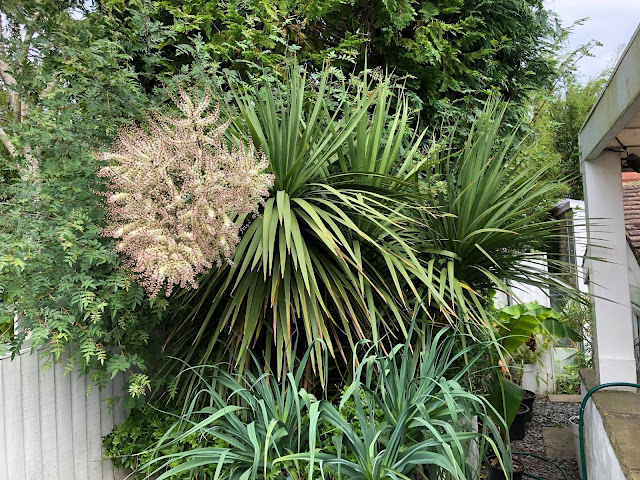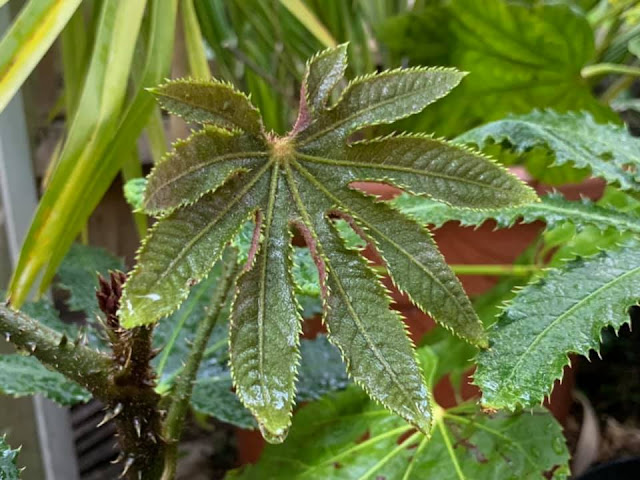Well not quite but have spent some time recently potting up some of the ones we have...
 |
| Mangave 'Inkblot' |
We've only every grown Manfreda before with moderate success and two Mangaves, 'Bloodspot' and 'Macho Mocha'. The former has done incredibly well for us in the conservatory until it bloomed a few years ago, while the latter struggled by being constantly nibbled by snails to the point of demise. This cross between an Agave and a Manfreda is monocarpic so once it blooms it can take awhile for resulting offsets and/or bulbils to be good enough to take over the mother plant.
 |
| Mangave 'Lavender Lady' and 'Red Wing' |
There are plenty of varieties out there, some I find more attractive than others and it's easy enough to get into collecting them. With space a premium in our garden we have to be selective and just go for the ones that really appeals to us. Fortunately they are not that hard to come by here in the UK these days as they are well distributed in garden centres here now. They have a very good marketing team and are appealing to both the garden and houseplant brigade.
 |
| Mangave 'Mission to Mars' |
From our limited experience they do well as houseplants too, for a sunny spot otherwise they lose the distinctive markings.
 |
| Mangave 'Pineapple Express' |
They also make for a great pot plant so matching them with an appropriate colour and shape of pot add to the fun of repotting them.
 |
| another Mangave 'Inkblot' |
 |
| Mangave 'Lavender Lady' |
Are you into mangaves too, and if so which ones are your favourite?
Mark :-)












































 This gardening blog follows our journey as we create our Tropical and Exotic themed garden. We hope you'll enjoy the journey as much as we do. We started our Exotic Garden in 2005 and this site will show its development, as well as our travels, both abroad and within the UK to gardens, nurseries and friends.
This gardening blog follows our journey as we create our Tropical and Exotic themed garden. We hope you'll enjoy the journey as much as we do. We started our Exotic Garden in 2005 and this site will show its development, as well as our travels, both abroad and within the UK to gardens, nurseries and friends.











